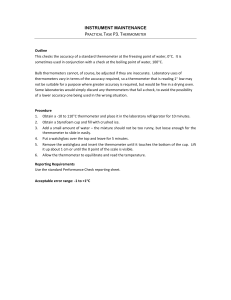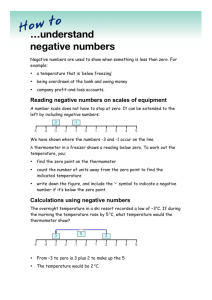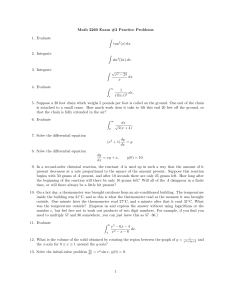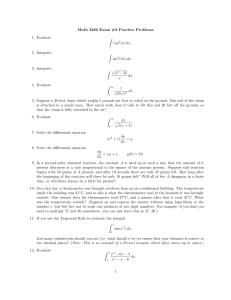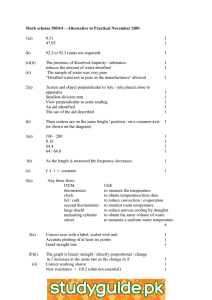Document 13418222
advertisement
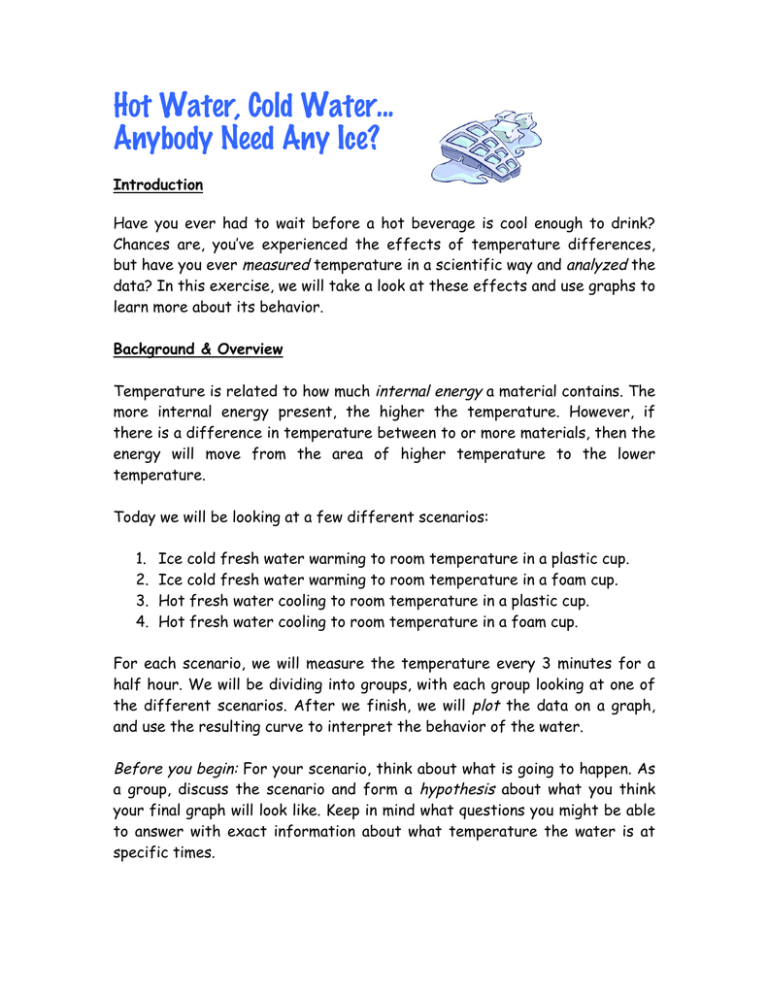
Hot Water, Cold Water... Anybody Need Any Ice? Introduction Have you ever had to wait before a hot beverage is cool enough to drink? Chances are, you’ve experienced the effects of temperature differences, but have you ever measured temperature in a scientific way and analyzed the data? In this exercise, we will take a look at these effects and use graphs to learn more about its behavior. Background & Overview Temperature is related to how much internal energy a material contains. The more internal energy present, the higher the temperature. However, if there is a difference in temperature between to or more materials, then the energy will move from the area of higher temperature to the lower temperature. Today we will be looking at a few different scenarios: 1. 2. 3. 4. Ice cold fresh water warming to room temperature in a plastic cup. Ice cold fresh water warming to room temperature in a foam cup. Hot fresh water cooling to room temperature in a plastic cup. Hot fresh water cooling to room temperature in a foam cup. For each scenario, we will measure the temperature every 3 minutes for a half hour. We will be dividing into groups, with each group looking at one of the different scenarios. After we finish, we will plot the data on a graph, and use the resulting curve to interpret the behavior of the water. Before you begin: For your scenario, think about what is going to happen. As a group, discuss the scenario and form a hypothesis about what you think your final graph will look like. Keep in mind what questions you might be able to answer with exact information about what temperature the water is at specific times. Procedure 1. Before you begin, write down the temperature reading of the thermometer with the label “Room Temperature.” This is the temperature of the surrounding air. 2. Prepare a two-column table for recording your data. Label the leftside column “Time” and fill it in with numbers from 0 to 30 in multiples of 3. This represents the time elapsed, in minutes, of each temperature measurement. Label the right-side column “Temperature.” This is where you will write down your temperature measurements. 3. Get your cup with water, thermometer, and stirring spoon from your teacher. 4. Start your timer, place the thermometer into the water, and wait a moment. Once the temperature reading on the thermometer stops changing, write it down in the “Temperature” column in the first row, next to the time value “0.” This is the initial temperature of the water. 5. Remove the thermometer from the water. 6. Begin stirring the water, and continue to stir until the next temperature measurement. 7. After 3 minutes, place the thermometer back in the water and take a new measurement. Write it down, along with the time of the measurement. Repeat until 30 minutes has passed. When you are finished, you should have 11 data points, including the initial temperature. Analysis Make a graph of your temperature measurements, putting time on the x-axis and temperature on the y-axis. Connect the data points and interpret the results. Was your hypothesis supported by the data? Did the temperature of the water ever equal that of the surrounding air? Is the data linear or nonlinear? What is the independent variable in this exercise? What is the dependent variable? © 2010 John Bush, Colorado School of Mines GK-12 Learning Partnership, http://inside.mines.edu/~jobush/gk12 Support for this work is provided by the National Science Foundation’s Graduate Education, NSF, DGE-0638719 Permission is granted to copy, distribute and/or modify this document under the terms of the GNU Free Documentation License, Version 1.3 or any later version published by the Free Software Foundation; with no Invariant Sections, no Front-Cover Texts, and no Back-Cover Texts. [GFDL (www.gnu.org/copyleft/fdl.html) or CC-BY-SA-3.0 (www.creativecommons.org/licenses/by-sa/3.0/)]
